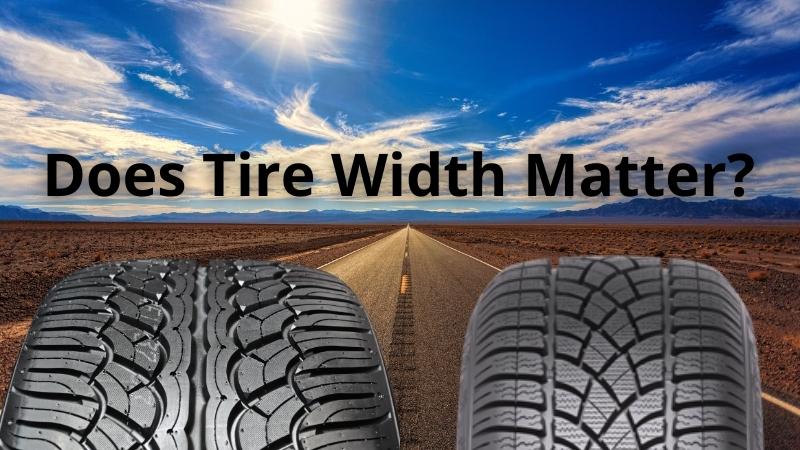In the technological era of cars, the width of tires is one of the most debated subjects.
Does the width of a vehicle’s tires matter? What roles do they play if they matter? Should you go wide or thin?
These are some of the constantly asked questions. Are you in search of answers to these questions yourself? You’ve made the right choice.
This piece addresses all you need to know about the impact of tire width. You also get bonus suggestions on whether to go wide and thin.
5 Reasons Why Tire Width Matter
Summer tires that are more flamboyantly designed than their winter counterparts are popular among drivers. As a result, summer tires are often wider and lower in profile, while winter tires are typically narrower and higher in profile.
The tires that a car travels on have an impact on the way it looks, how it rides, and a variety of other variables. Let’s examine some of the top impacts the width of a tire has on a car:
1. Appearance
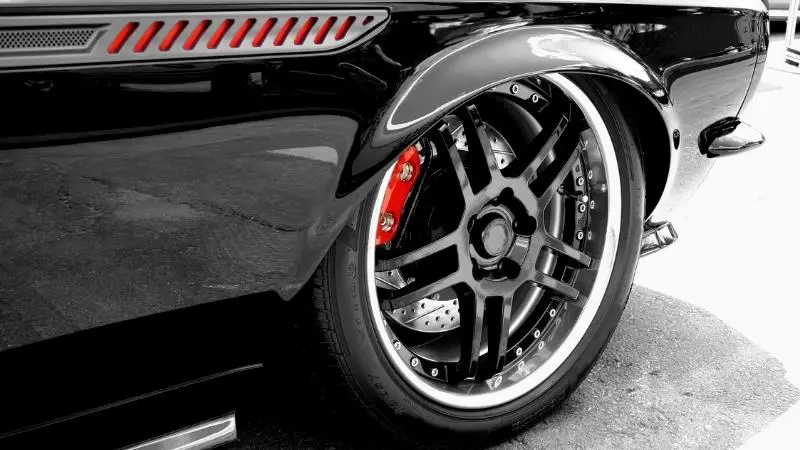
Ever washed your car and you forgot the tires? How did your car look after? That’s right! Tires play a role that cannot be undermined in a car’s appearance. It’s common today to see car drivers going for wider tires.
Wider tires have so many other benefits. However, one of the impacts that stand out is how great they improve your car’s appearance.
Changing from the tires attached by your vehicle’s manufacturer to wider ones comes with lots of attractive perks.
2. Grip
The grip is a really important way that the width of a car tire is impactive. Moreover, the effect of tire width on the grip of a car is relative to the kind of terrain being threaded. The difference between wide and thin tires on dry terrains isn’t so big though.
However, they perform differently in the snow and rain. Thin tires provide better traction and side cornering in the snow. This is mainly because they mount better pressure which makes it possible to dig deeper into the snow.
Wider tires on the other hand give better traction in the rain. You would appreciate the width and tread width of these tires when driving through a puddle of water. You can allay all fears of hydroplaning with wider tires.
3. Noise Level
The width of your tires also has an impact on the noise level. Thin tires usually have higher pressure and make irregularities on the roads obvious. Hence, you’re more likely to get more noise when driving with a thin tire.
Wider tires on the other hand make the irregularities on the road less evident. This means you have a smoother drive with fewer noisy sounds produced from your car.
4. Price
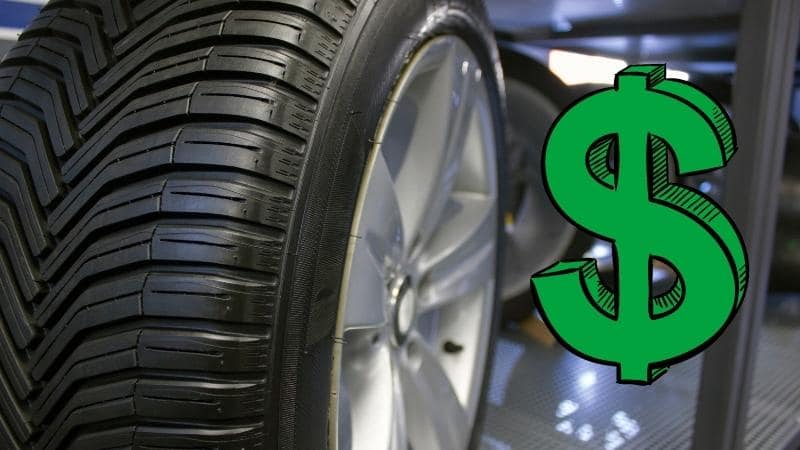
According to Consumer Reports, larger tires are associated with higher prices. You must make an effort to strike the optimum balance between size and price range. If you choose bigger wheels and tires when you acquire your car, you may not notice a price increase at first.
However, you notice the change when you need to replace the larger wheels and tires. The cost of replacement will be greater than if you had chosen smaller wheels and tires.
5. Speedometer Readings
To get the most performance out of your tires, remain with the same tire width you had before. Always use tires with the same width to keep your speedometer from being confused. This also prevents causing harm to your vehicle’s anti-lock brake systems and stability system calibrations.
Changing to smaller or bigger tires has the same effect. The suspension, wheels, and tires themselves may be damaged. You run a risk of receiving false speedometer readings if you install bigger tires with an inappropriate sidewall height.
There should be no noticeable difference in speed or speedometer readings if you match bigger wheel diameters to lower-profile tire sizes. Shorter sidewalls indicate stronger tire sidewalls and a greater risk of blowouts if you strike an unexpected pothole.
Should You Go Wide or Thin? 6 Things to Consider
The question of whether to go wide or thin does not have a straight response. The choice is personal and can only be made after considering certain factors.
To help you make the best decisions, let’s examine some important factors to check. These would help you weigh the things you need and which tire performs better in those aspects.
1. Vehicle Gross Weight
Choosing the right tire size depends on the weight of your vehicle. It has a lot to do with the distribution of the vehicle’s weight among the four wheels. Generally, narrower tires are more suited for a compact vehicle, whereas larger and wider tires are better suited for SUVs and other larger vehicles.
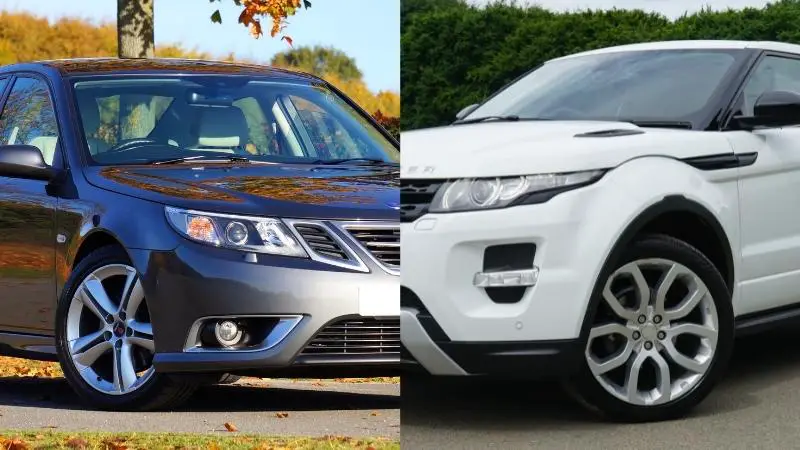
Maintaining traction means applying pressure to all of the tire’s circumference while it is in contact with the road. The vehicle’s chassis must also be kept in balance.
2. Traction
Wider tires do provide higher traction, it’s true. Super-wide tires are standard equipment on all of today’s low-slung sports automobiles. Isn’t this the case for everyone? Unfortunately, that’s not the case here.
The amount of pressure an item exerts per square inch of its width is taken into consideration when determining traction. This pressure increases with increasing speed and other variables.
It is possible to have greater traction on the road with a wider tire, but this does not guarantee a solid hold. The weight should be evenly distributed to ensure that the tires can grip the road. So if you go with tires a lot wider than intended for your car, you’re going to lose part of the vehicle’s traction.
3. Resistance to Steering and Braking
Wide tires are also used in racing because they provide greater handling (particularly in tight bends). Because of their broader tread surfaces and stronger sidewalls, larger tires are more maneuverable and have higher cornering capability.
To enhance your car’s ability to make tight turns on dry roads, a little increase in tire width should be enough. The braking lengths may be reduced by using larger tires. However, this is not always the case.
4. State of The Road
You may have to drive in a variety of conditions, including dry, rainy, and even snowy. In dry weather, your car’s performance isn’t going to vary much. However, in wet or snowy conditions, you may want to think about your options.
When it comes to getting stuck in puddles, wider tires tend to give better traction. This has its downsides too anyway.
5. Comfortable Sound
Compared to narrower tires, a quieter ride may be achieved by using tires with a broader contact patch on the road. As a result of its larger size, a larger vehicle is better able to handle bumps in the road. This is because it distributes its weight over a larger area.
If you want a quieter ride, choose tires that are a little wider since they give additional cushioning and flexibility in the tire sidewalls.
6. Fuel Consumption
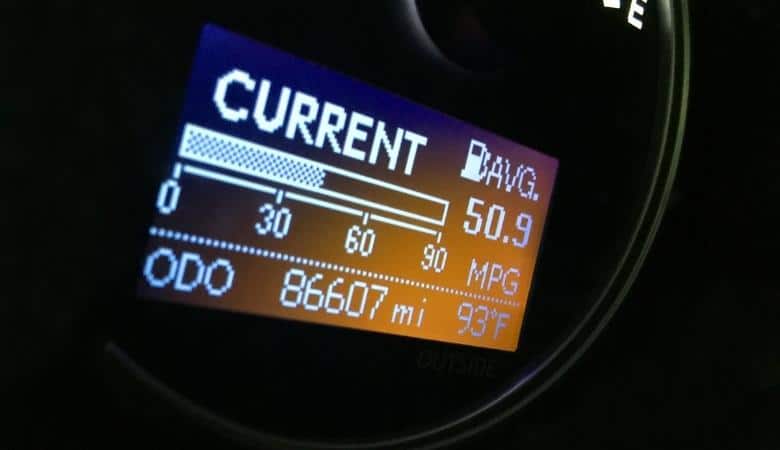
With bigger tires, you may notice an increase in fuel consumption. The engine will have to work more to maintain the same speed because of the increased surface area of contact. This is a direct result of the mismatch between the imbalanced proportions.
Conclusion
Choosing the appropriate type of tire is more than just a matter of personal preference. It involves a slew of considerations that influence how well your car performs in a variety of situations and climates.
As a result, when it comes to aesthetics and functionality, you can’t have your cake and eat it too. Finding a happy medium is the most prudent course of action in this situation. Improvements in both performance and appearance are achieved by combining the best of both worlds.
Make sure to be careful when making tire choices! Always stick to the same brand too for the best experience!
Hi, my name is Niklas, the head content creator & CEO of Whirling Wheelz. I am very interested in vehicles of all kinds, mainly cars. I have a car mechanics degree from high school and a big hobby of mine is to follow the WRC (World Rally Championship) both online and through travel.

